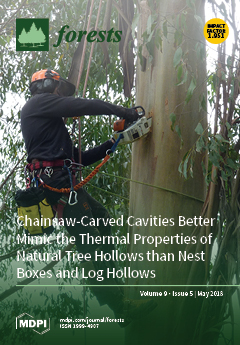Focusing on the underlying ecological mechanisms of dominant species regeneration in forest gaps at a landscape scale can provide detailed understanding for gap-based forest management. The individual effects of forest gaps or elevation on the regeneration of
Abies faxoniana Rehd. et Wils. are well known, although elucidating how gap characteristics and elevation concurrently influence regeneration remains an important challenge. In this paper, we present an explorative study using structural equation models (SEMs) to assess the direct and indirect effects of forest gaps and elevation on
Abies faxoniana Rehd. et Wils. regeneration. Four of the predicted SEMs showed the following results: (1) Temperature, photosynthetic photon flux density (PPFD), soil total carbon, gap openness, shrub layer cover, herb layer cover, and moss layer thickness in forest gaps were associated with
Abies faxoniana regeneration along an elevation gradient in subalpine coniferous forest. (2) Elevation had a generally negative and indirect effect on
Abies faxoniana regeneration. Forest gaps positively affected regeneration when compared with non-gap plots and gap size was positively related to small tree regeneration density and the ratio of height to diameter at breast height (HD ratio) of the tallest
Abies faxoniana small trees but was negatively related to
Abies faxoniana sapling regeneration density. (3) In forest gaps, the
Abies faxoniana sapling density and HD ratio of the tallest
Abies faxoniana small trees were mainly indirectly influenced by elevation, and
Abies faxoniana small tree regeneration density was directly associated with the dominance of the sapling regeneration density. In summary,
Abies faxoniana regeneration was negatively and largely affected by elevation (total effect), although forest gaps enhanced
Abies faxoniana regeneration by multiple pathways (direct and indirect effects).
Full article





